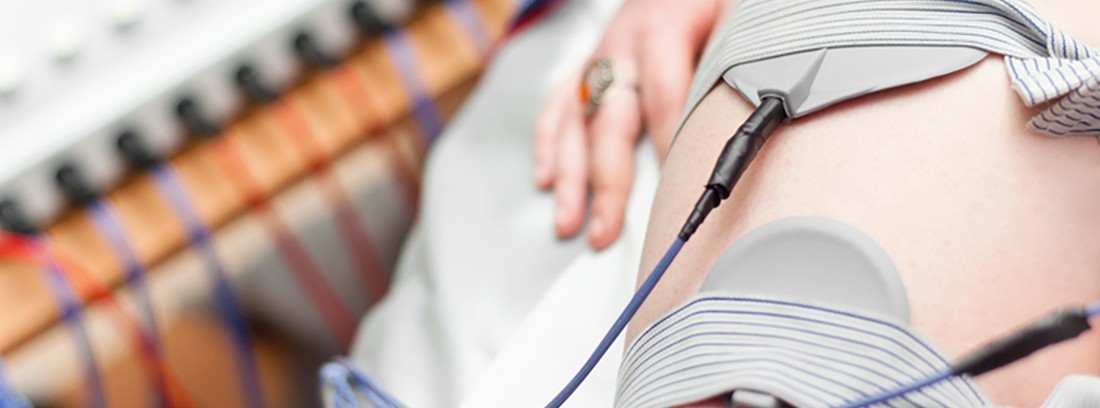Electromyogram

What is the electromyogram?
Diagnostic test belonging to the field of Neurophysiology that consists of carrying out a recording of the electrical activity of the different muscles or muscle groups of the body through the use of electrodes, elements in the shape of a fine needle that emit electrical impulses and collect the electrical activity generated by said impulses, a oscilloscope or a device that detects the electrical activity generated and its oscillations and a computer that collects and interprets the data obtained.
Electrical activity is that which is generated in a certain muscle or muscle group when it is subjected to a voluntary stimulus (for example a voluntary contraction of the muscle by the patient) or involuntary (for example an electrical impulse produced by an electrode that gives leading to an involuntary contraction of the muscle). Electrical activity depends on the muscle and the nerve that supplies it.
The electromyography It allows to detect alterations of the muscular electrical activity and of the peripheral nervous system (absence, excess or defect).
How is the study done?
The study is carried out in the Neurophysiology Unit by specialized personnel
The patient must undress the muscle area under study and remain lying on a stretcher during the study. The explorer will insert a certain number of electrodes as a fine needle on the muscle or muscle group that you want to study, which will be connected to the oscilloscope. Each electrode will emit a electrical impulse that will give rise to a small involuntary muscle contraction which in turn will generate a muscular electrical activity that will be detected by the electrode itself and collected by the oscilloscope. Subsequently, a record of the electrical muscle activity will be made under voluntary muscle contractions performed by the patient himself.
The duration of the study will depend on the number of muscles or muscle groups to be studied.
Preparation for the study
Electromyography does not require prior preparation by the patient. It may be recommended to avoid sports or strenuous physical exercise 72 hours before the study. Some drugs can modify the result of the study so the patient should consult with his doctor if he performs any type of treatment before the study is carried out. Should avoid applying creams or lotions in the area on the day of the study.
What does it feel like during and after the test?
Depending on the sensitivity of each patient, the study can be annoying or even painful. In any case, in most cases the test is tolerable. After the study, a small bruise may appear in the area of application of the electrodes that will disappear in the following days. Tenderness or discomfort may appear in the studied muscle or muscle group that generally responds to the usual analgesic treatment and that usually disappears in the next few days or weeks.
Study risks
- Minimal bleeding at the electrode application point
- Infection at the electrode application site
- Electrode allergy
Contraindications
The patient should consult his doctor before conducting the study in the case of:
- Taking medication, especially blood thinners
- Hypersensitivity to pain
Reasons why the study is carried out
Electromyography is a widely known and used test in the field of Neurophysiology and Neurology, since it is a test that can be uncomfortable for the patient and should only be performed in selected cases. Electromyography has multiple applications since it provides objective information about the state of muscles and nerves that integrate them.
At the diagnostic level it allows to determine if there is muscle or neurological damage in patients who present symptoms such as loss of strength, muscle pain or weakness, paresthesia, cramps, etc. It allows confirming or ruling out the diagnosis of degenerative muscle or neurological diseases such as dystrophies, myasthenia or, among others. Useful in the diagnosis of diabetic neuropathy (typical complication of poorly controlled diabetic patients).
At the therapeutic level, it allows deciding whether a certain injury (such as a herniated disc or a trapped nerve) is subsidiary to surgical treatment or not. At the medical legal level it allows to objectively determine if the patient has a certain muscle or nerve injury or if on the contrary it is a simulator.
Family and Community Medicine Specialist
(Updated at Apr 15 / 2024)